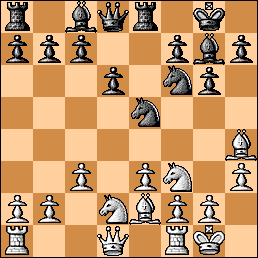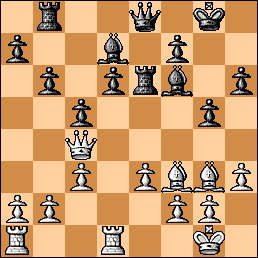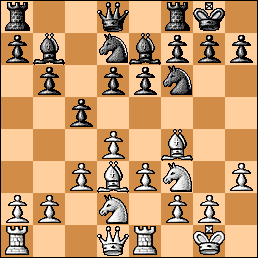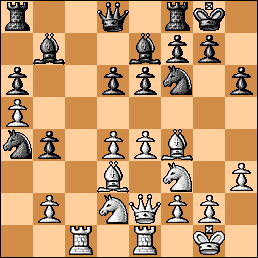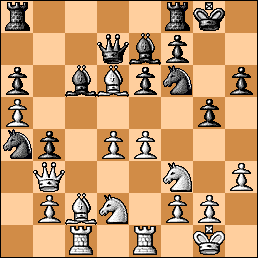Here is another one of my correspondence chess games played at ICC. I just resigned today because the only way to avoid checkmate was to sacrifice my Queen for a Rook. I am now 0-2 in this section. My new correspondence chess rating is 1551 and my opponent's is 1959. I ended up in an opening that I don't know against a much higher rated player. I used MCO 14 as my guide to the opening but my opponent got me out of book early when he prevented my Knight from going to b5. My opponent's first name is Steve. I don't know his last name. He lives in TN. I am not posting this game to my chess site because I don't normally play either side of the Caro-Kann.
Mike's comments are illuminating on several fronts.
First, the viability of the Caro Kann is enhanced by the fact that club level players (and that is most of us) don't see it very often. King pawn players typically concentrate on their e4 opening of choice and the variations of 1...c5 and 1...e6 they are sure to see. 1...c6 is usually an afterthought in their opening repertoire. In OTB play this will lead to uncertain play from many White opponents and in correspondence play the undeserved reputation of the Caro Kann will lead to a bit of carelessness from players less than Class A.
Second, when White uses a lesser known variation (in this case 2.c4) they are often at a loss as to the subtleties of the opening while the Black player is completely at ease with his position, having seen, studied, and played it before. Mike states that he was out of book (using MCO-14) early on. When, as White, your opponent plays a lesser used opening, you may be certain that he has various sources to choose from for opening theory. We are in the computer age and players should avail themselves of the databases that are on the net, at the very least. Chessgames.com and Chesslab are excellent sources for quick access to master level games on almost every opening.
In our game, I have to wonder if Mike knew that this variation involved having an Isolated Queen Pawn.
The Caro Kann has a reputation of being a dull, uninspired opening. It is not. It is a tough defense that turns into a dangerous attacking weapon if White plays carelessly at any point. It attracts players that have based their play in sound positional theory and that are willing to be patient and accumulate advantages as they come along.
[Event "ICC correspondence 2007Seven.02.06"]
[Site "Internet Chess Club"]
[Date "2007.08.25"]
[Round "-"]
[White "OnGoldenPawn"]
[Black "sdo1"]
[Result "0-1"]
[ECO "B10"]
[WhiteElo "1549"]
[BlackElo "1969"]
[Opening "Caro-Kann: anti-anti-Caro-Kann defense"]
[NIC "CK.01"]
1. e4 c6 2. c4 d5 3. exd5 cxd5 4. cxd5 Qxd5 5. Nc3 Qd6 6. d4 Nf6 7. Bc4 e6 8. Nf3 a6

I have no intention of allowing White to get at b5 and c7.
9. O-O Be7 10. d5
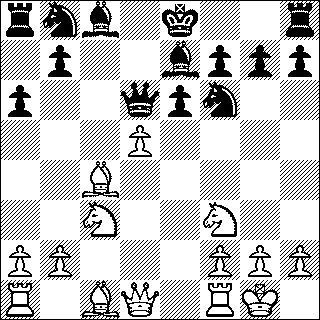
White here wishes to sac his ISO to open lines for his better developed forces. My conclusion is that this forcing is too early, he isn't that better situated despite being castled. 10...b5 allows me to disrupt the pieces he has developed. 12. dxe6 was a better try than retreating the Knight and at that point we are completely out of theory.
10. ...b5 11. Bb3 b4 12. Ne2 Nxd5 13. Bg5 Bb7 14. Bxe7 Qxe7 15. Ned4 O-O 16. Re1 Rd8 17. Qc1 Nd7 18. Qd2 Rac8 19. Nxe6 fxe6 20. Bxd5 Nc5 21. Bxe6+ Nxe6?
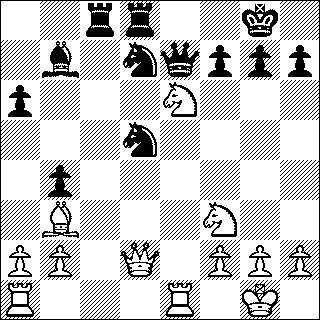
I understand why saccing a piece here is attractive, and it might work in blitz play. However, in correspondence is simply loses a piece for a pawn. From here out it is simply a matter of translating the material advantage to a win. This was aided by White falling for the trap of 25. Qxa6.
22. Qe3 Bxf3 23. Qxf3 Qf7 24. Qe2 Nf4 25. Qxa6 Nxg2 26. Kxg2 Qd5+ 27.
Kg1 Rc6 {White Resigns} 0-1


